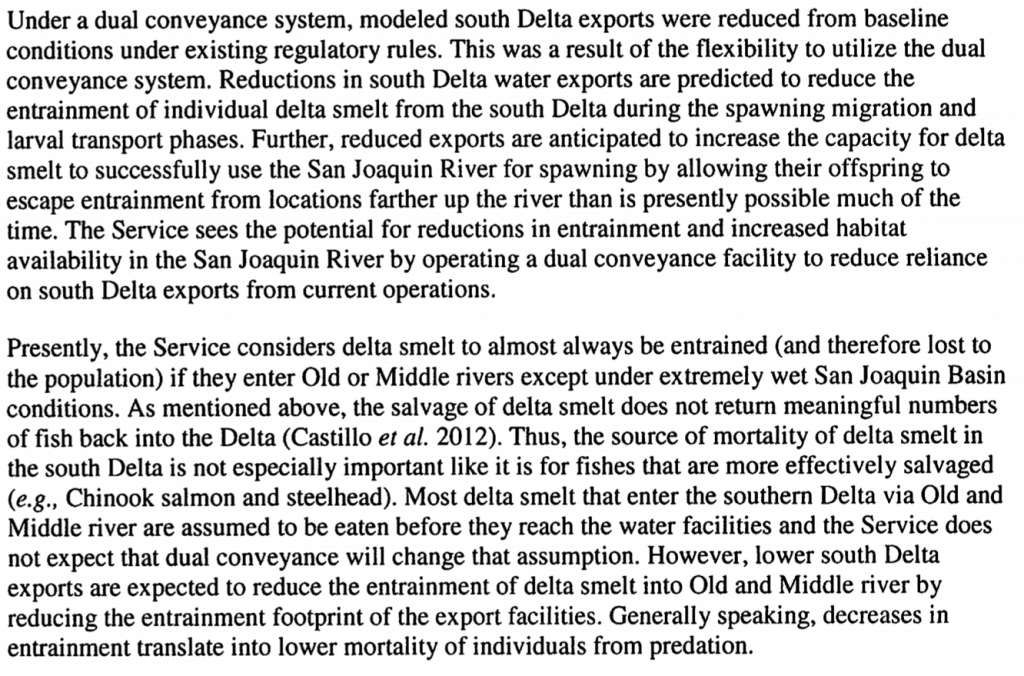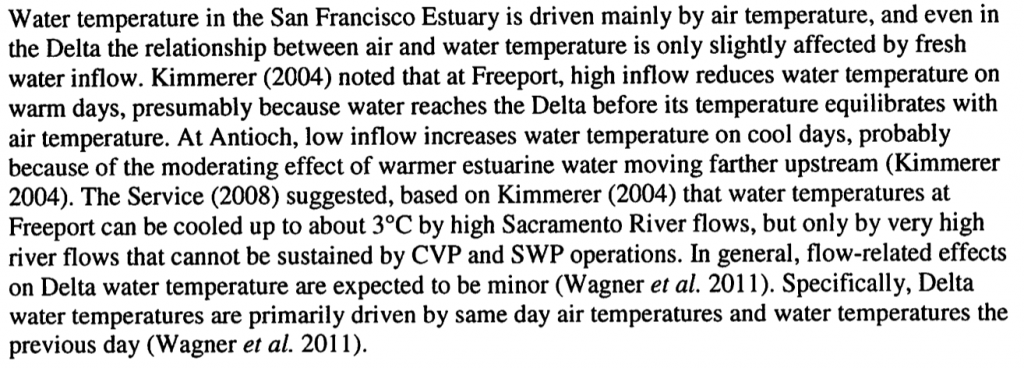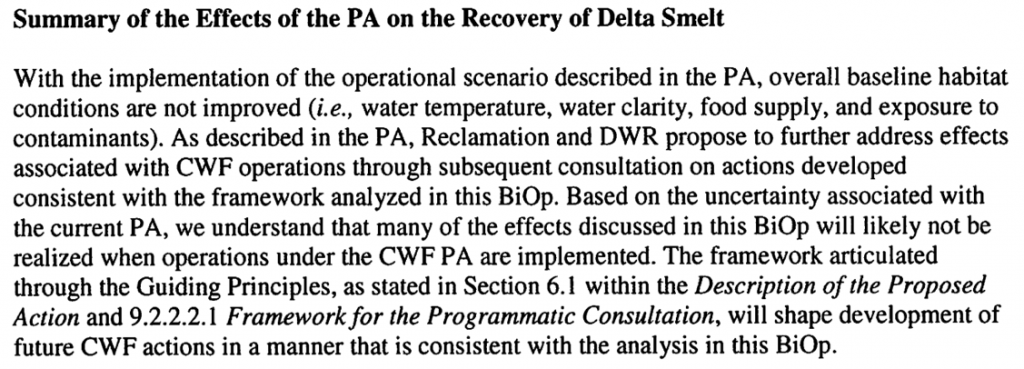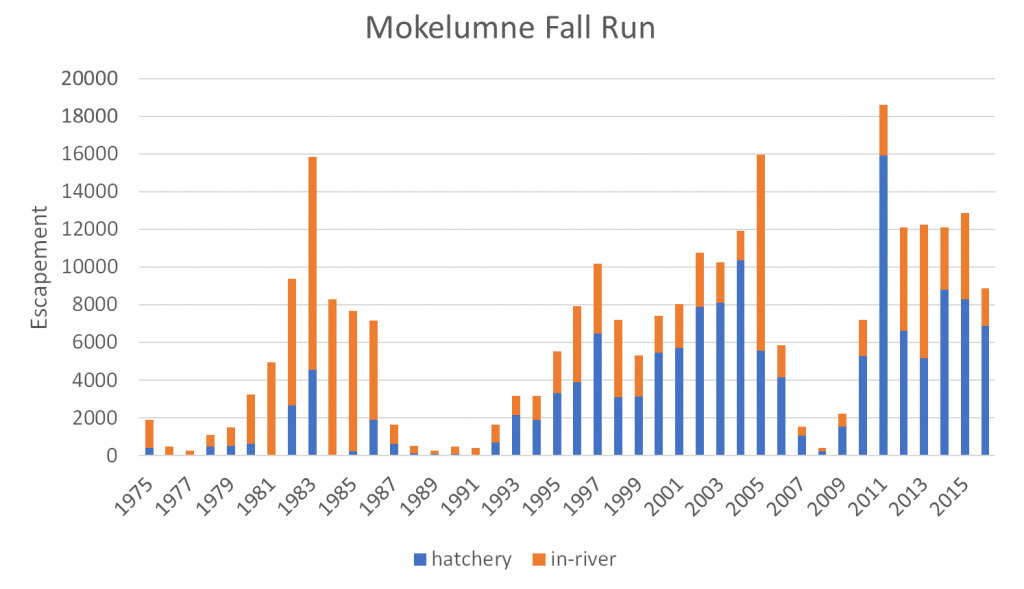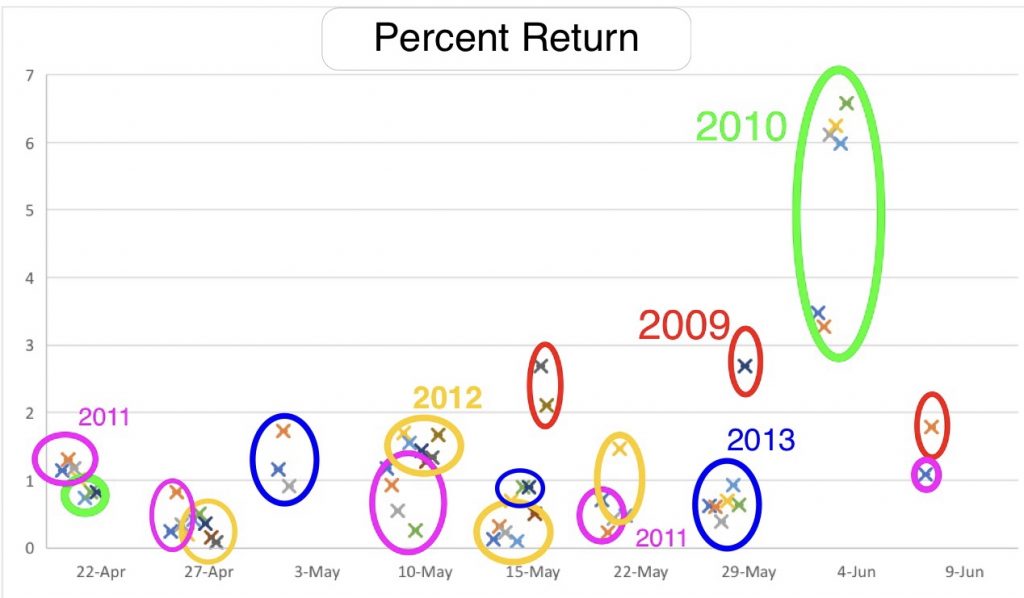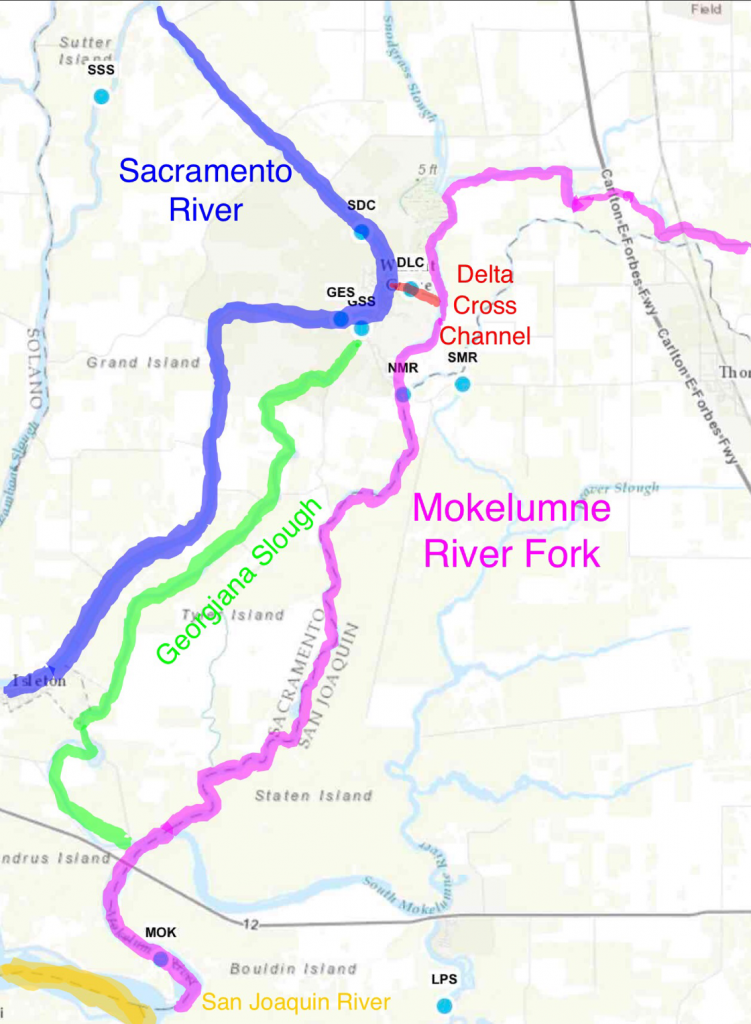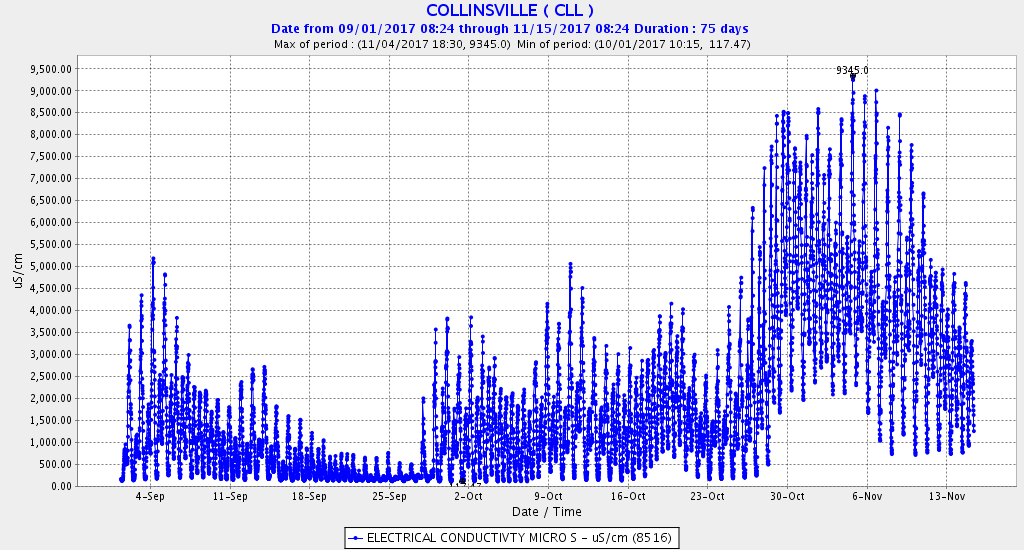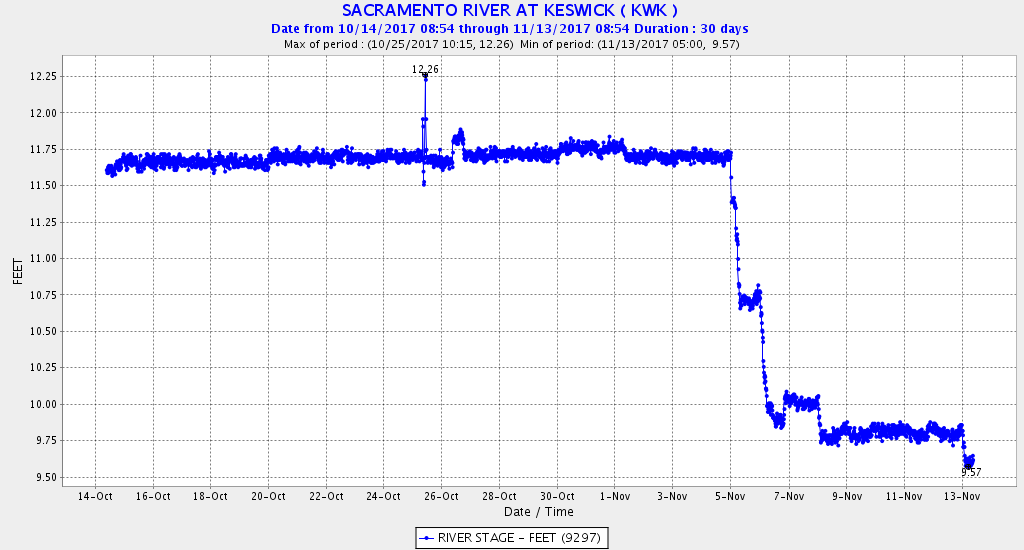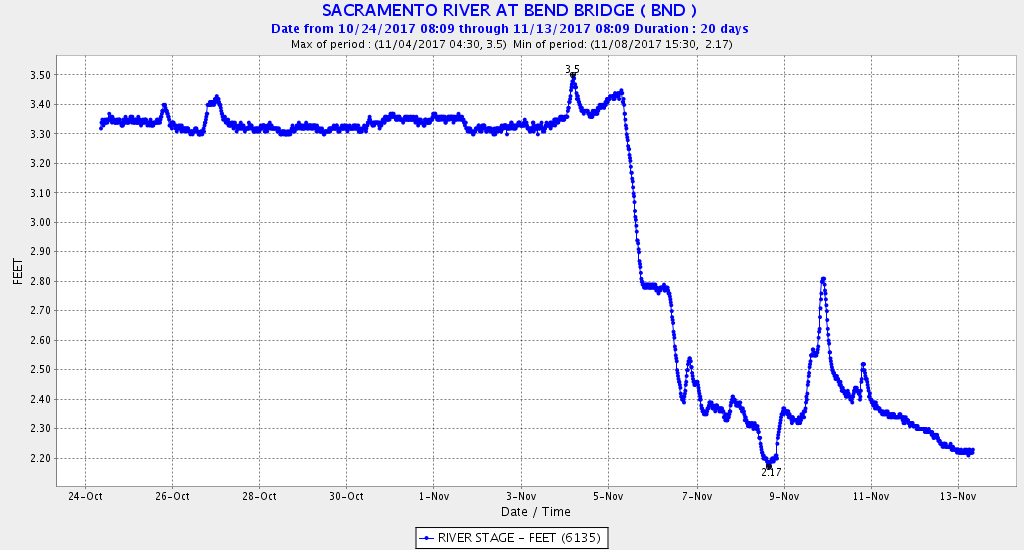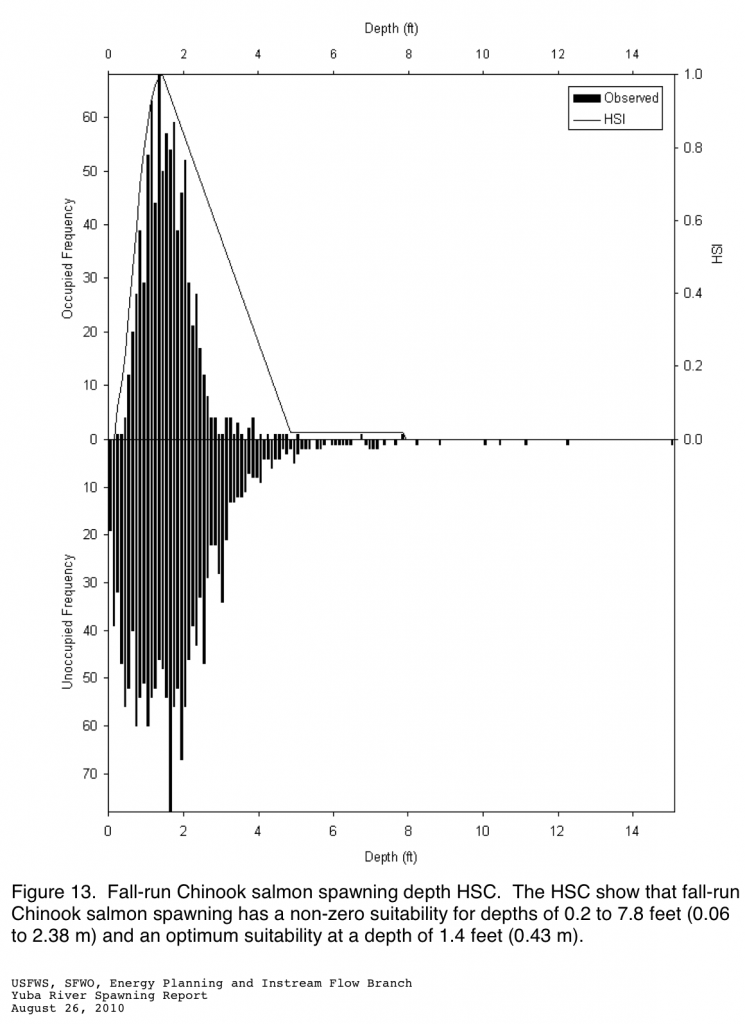With a potentially record-low rain total for December, the federal and state water projects are cutting reservoir releases but keeping up exports from the Delta, causing great peril to Central Valley salmon. Figure 1 summarizes Delta conditions as of mid-December.
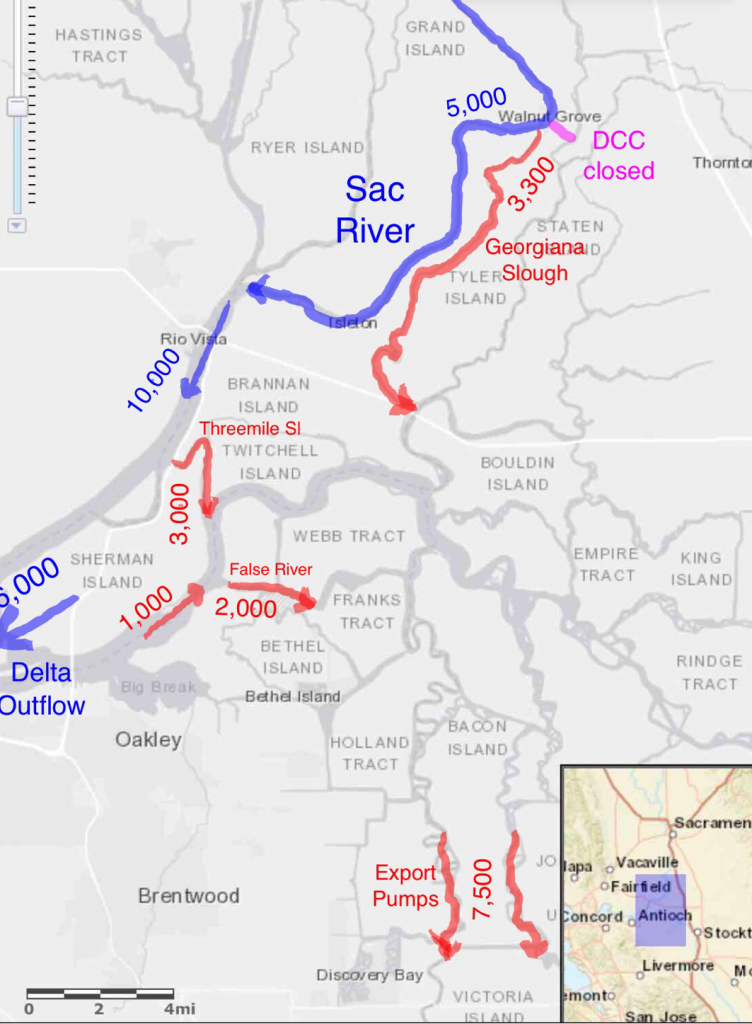
Figure 1. Major Delta net daily flows (cfs) in mid-December 2017. Map source: USGS. Data sources: USGS and CDEC.
For juvenile winter run, spring run, fall run, and late fall run Chinook salmon migrating down the Sacramento River, the risk is obvious. With nearly 40% of Sacramento River inflow diverted at Georgiana Slough and another 30% diverted at Threemile Slough, less than half of the Sacramento River’s inflow to the Delta is reaching the Bay. Of the total Delta inflow, only 45-50% is reaching the Bay. Nearly all the San Joaquin River Delta inflow is being exported.
Assuming that the young salmon split with the flow, 60% of Sacramento fish are being diverted to the central Delta and near 100% of the San Joaquin fish are lost to the interior Delta. With winter run and late fall run juvenile salmon from the Sacramento River moving into the Delta during the late November storms (Figure 2), there is a high risk that the diverted fish will be lost in the interior Delta. Soon, spring run and fall run fry salmon will be moving into the Delta.
Under the conditions in the “Reasonable and Prudent Measures” required by the National Marine Fisheries Service’s Biological Opinion (BO) for the operation of the state and federal water projects, exports should be reduced when “large numbers” of juvenile salmon begin entering the Delta (Figure 3). The finding that there are “large numbers” is based on monitoring of juvenile salmon at Knights Landing and Sacramento. Peak catches in the past month were 3-7 per day (Figure 2). This does not meet the level of 10 per day under which the BO would trigger reducing exports. However, the trigger dates from a time when the Sacramento River was producing 6 to 10 times more juvenile winter run salmon. In the last four years, juvenile production of winter run in the upper Sacramento River near Redding has been at record low levels of 300,000 to 500,000, compared to 3.3 million in 2009 when the BO was published. “Large numbers” today are understandably smaller than they were eight years ago.
Exports should be reduced immediately until outflow to the Bay increases dramatically. January BO limits will require Old and Middle River (OMR) flows near the south Delta export pumps to be no more negative than 5000 cfs. With December OMR flows in excess of -9000 cfs (Figure 4), exports should be reduced now to limit OMR to -5000 cfs or lower per BO Action IV.3 through the remainder of December.

Figure 2. Catch of unmarked older Chinook juveniles (likely winter run and late fall run) at Knights Landing and Sacramento in fall 2017. Data from CDFW and USFWS surveys as reported by www.cbr.washington.edu/sacramento/
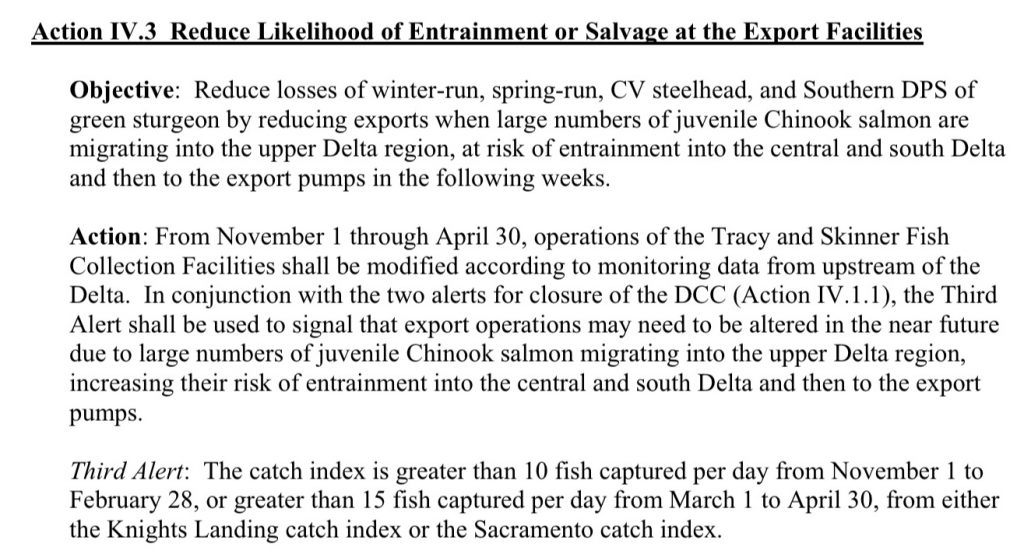
Figure 3. Excerpt from p. 652 of NMFS BO 2009.

Figure 4. OMR flows in south Delta. Source: https://www.usbr.gov/mp/cvo/vungvari/OMR_Dec2017.pdf .


